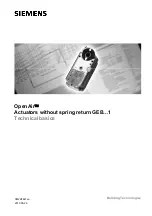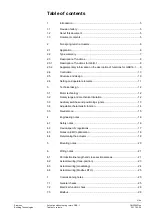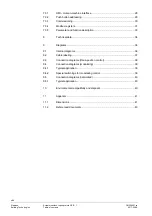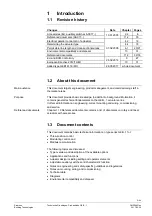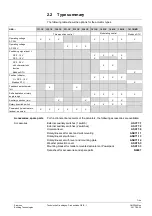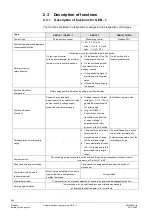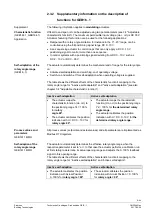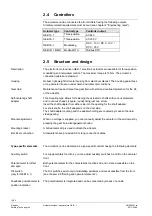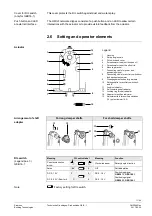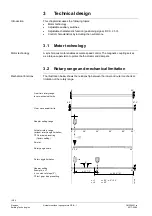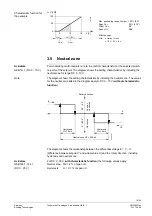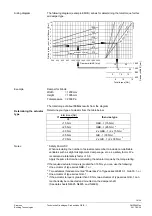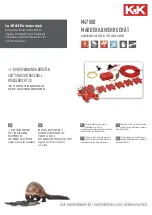
9/44
Siemens
Technische Grundlagen: Drehantriebe GEB...1
CM2Z4621en
Building Technologies
2017-05-26
2.3.2 Supplementary information on the description of
functions for GEB16..1
The following information applies to
modulating
actuators.
Offset Uo and span
Χ
U can be adjusted using two potentiometers (see 3.4 "Adjustable
characteristic function"). The maximum permissible input voltage (Uo +
Χ
U) is DC 35 V.
Actuators featuring this function can be used for the following applications:
∂
Dampers with a rotary angle limitation, for instance in the 0°...45° range, can be
controlled using the full positioning signal range DC 0...10 V.
∂
As a sequencing actuator in control loops that can only apply a DC 0...10 V
positioning signal to control more than one sequence.
∂
In control systems with a positioning signal deviating from DC 0...10 V such as
DC 2...10 V or DC 0…35 V.
The actuator automatically determines the mechanical end of range for the rotary angle
on:
∂
Activated self-adaptation and switching-on of operating voltage.
∂
Switch-on and switch-off for self-adaptation when operating voltage is supplied.
The table shows the different effects of the characteristic function's mapping to the
rotary angle range for "inactive self-adaptation" and "active self-adaptation" (see also
chapter 3.4 "Adjustable characteristic function").
Inactive self-adaptation
Active self-adaptation
∂
The actuator maps the
characteristic function (Uo,
Χ
U) to
the positioning range Ys = 100 %
for
rotary
angle 90°
.
∂
The actuator calibrates the position
indication with U = DC 0...10 V for
rotary angle 90°
.
∂
The actuator maps the characteristic
function (Uo,
Χ
U) to the positioning range
Ys = 100 % for
the determined rotary
angle range
.
∂
The actuator calibrates the position
indication with U = DC 0...10 V for
the
determined rotary angle range
.
All process values (setpoints and actual values) and all parameters are implemented as
Modbus RTU registers.
The actuator automatically determines the effective rotary angle range when the
respective parameter is set to “on”. In that case the actuator performs a calibration run
at first startup to determine its actual opening range and adjusts the 0..100% feedback
signal to this opening range.
The table shows the different effects of the characteristic function’s mapping to the
rotary angle range for “inactive self-adaptation” and “active self-adaption”:
Inactive self-adaption
Active self-adaption
∂
The actuator calibrates the position
indication with Actual Position =
0..100% for
rotary angle = 90°
∂
The actuator calibrates the position
indication with Actual Position = 0..100%
for
rotary angle < 90°
Supplement
Characteristic function
(GEB163.1, GEB164.1)
Application
Self-adaptation of the
rotary angle range
(GEB16..1)
Process values and
parameters
GEB161.1E/MO
Self-adaption of the
rotary angle range
GEB161.1E/MO

